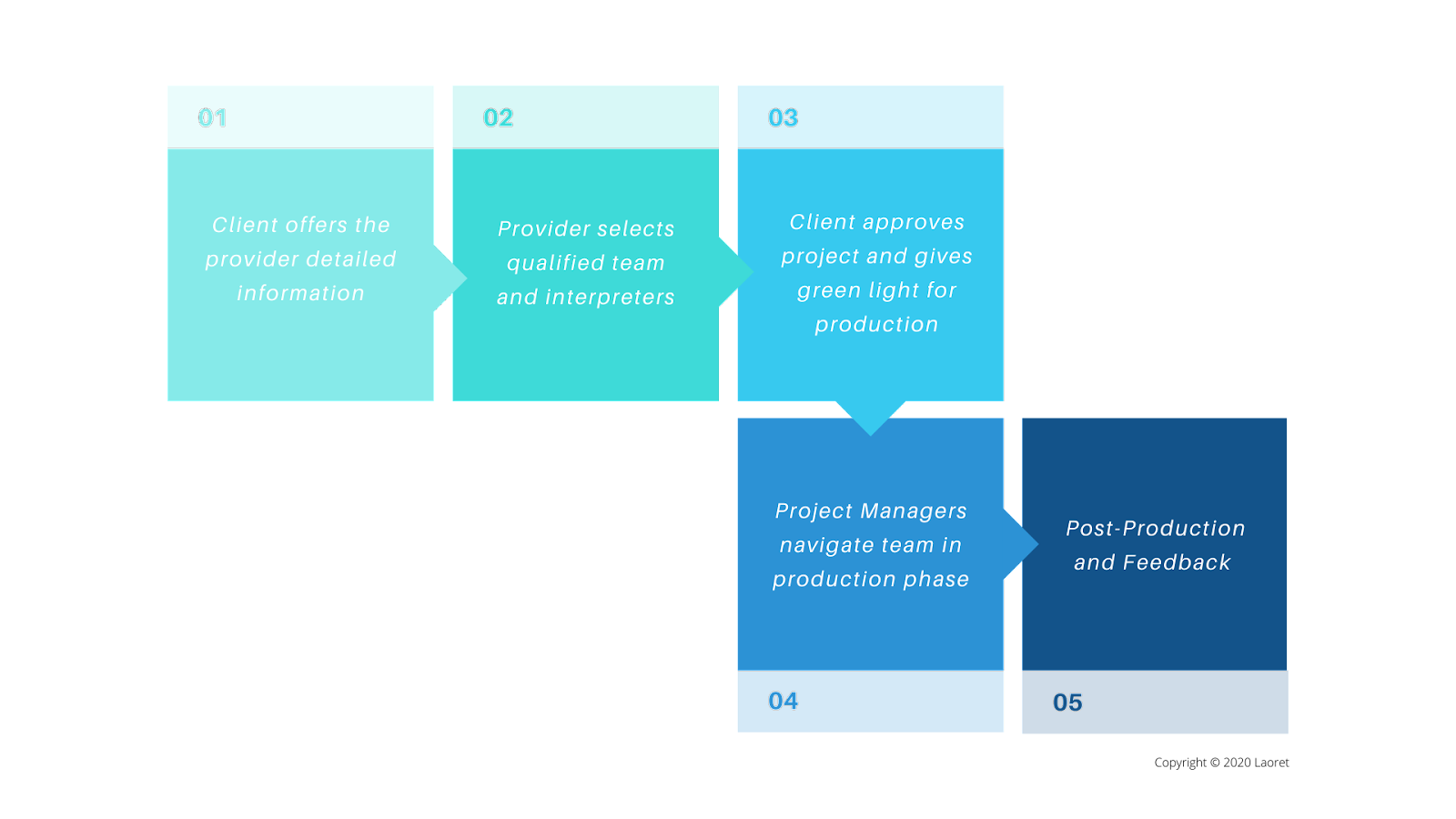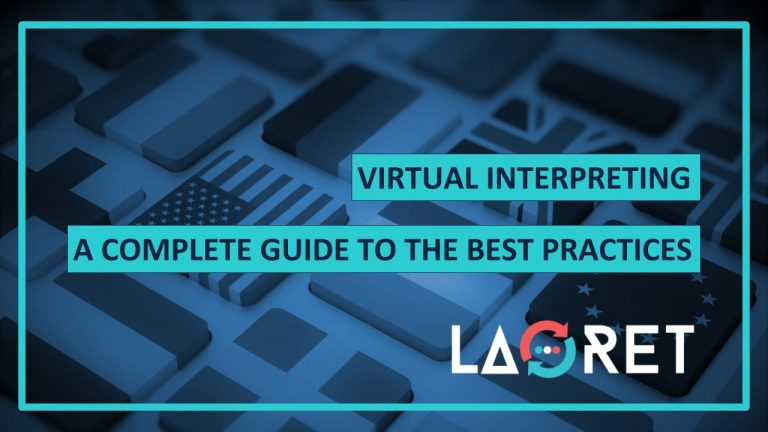Virtual Interpreting: A Complete Guide To The Best Practices
In this blog, we will explore the stages Virtual Interpreting Solutions go through and offer you a practical guide to achieving the best possible results through close cooperation with your Interpreting Provider.
While the Translation Industry has been considerably unphased by the consequences of the global crisis, there are services out there that have been transformed by it. On-Site Interpreting events have understandably taken a pretty deep plunge, but the industrys devotion to reinventing technological solutions has made sure that a virtual alternative was ready to take the lead.
Of course, COVID-19 has created certain market demands especially for medical interpreting that have developed at a faster pace. Virtual Interpreting Services have been around for decades, but have slowly but surely been expanding into bigger that can now be utilized effectively.
Virtual Interpreting Solutions: The Current State And The Various Types
The Virtual Interpreting game is all about innovation and adaptability. While Virtual Interpretation Services have been around in its consecutive form for decades, simultaneous interpreting events have found their own voice.
Technology is essential to the translation industry for projects on any level, but the Virtual Interpreting Events fully depend on it. Each application and platform is designed to meet the requirements of distinct functions from large, multilingual web conferences to one-on-one video calls. Let’s have a quick look at what the different types of Virtual Interpreting Events are and who they are designed for.
Over-the-phone Interpreting (OPI)
OPI is the oldest remote interpreting service on the list. This service follows the consecutive interpreting style, meaning that the interpreter translates one party’s communications to the other party through regular breaks. These days, platforms with enabled call functions have become rather popular, but OPI is still frequently used over a landline or mobile phone. While most commonly requested by hotlines and emergency services, OPI is also a welcome solution for the medical industry in terms of multilingual consultation calls, or even conferences.
Video Remote Interpreting (VRI)
VRI is a second consecutive interpreting solution, specifically designed for clients and interpreters looking to connect through video and audio. Thanks to this visual feature, both spoken language, and sign language solutions can be offered. While suitable for most industries, VRI is particularly useful in the health care sector where on-call medical professionals can benefit from an equally on-call service to interact with patients from varying backgrounds.
Remote Simultaneous Interpreting (RSI)
Unlike consecutive interpreting where the speaker needs to pause for the interpreter to translate, simultaneous interpreting respects the natural flow of the source-language user and matches their speed. As a result of the intensity of the interpreter’s job as well as the larger number of attendees and the often elaborate agenda, RSI requires quite a bit of planning, and even pre-planning, to run smoothly (no worries, we delve deeper into this below!).
In the case of an on-site event where the interpreter is not physically present, attendees usually connect with the interpreter through an application. When the conference is fully online, however, simultaneous interpreting platforms such as Kudo, Voiceboxer, Interactio, Speakus, and Verspeak, are put into use.

Which Expectations Should You Set?
boil down to the essential questions that occupy any potential client. And even when the projects and events move to a virtual front, these questions are largely the same.
What is out there? What is available to me? And, which option suits my project best?
The above-mentioned Interpreting Solutions aside, your quest for an ideal interpreting provider for your event will have to focus on more specific aspects. In that respect, here are some of the most valued qualities we highly recommend you keep an eye out for.
- Technological Authority: Pay attention to which tools the provider is using, and whether they are committed to innovating their services by working with the most up to date and suitable ones out there. Platforms for RSI events are always evolving and adding features, especially with the current rise in interest, and the best providers will leverage these.
- Translation Quality: Note that your provider uses on the most experienced interpreters who have received extensive training, possess industry-related knowledge, and can effectively handle a fast rate of speech along with the appropriate use of slang, idioms, proverbs, and accents.
- Delivery Time and Communication: Guess what. This one is a team effort and requires your own input as well. While a streamlined, internal workflow will help a great deal, a prompt delivery goes hand in hand with the information you provide and how well in advance you provide it.

Virtual Interpreting In Pre-Production: How Expectations Are Met
Let’s zone in a little bit on the organizational chaos that is the RSI event. We all want our expectations to be met. But it is important to remember that the best results are achieved through cooperation. When it comes to Interpretation projects, both Virtual and On-site, it is worth bearing in mind the multifaceted and complex nature in terms of resources, both technical and linguistic. The provider’s success is nurtured through the collection of information and a detailed assessment of the project’s scope.
But what does this mean specifically? How does information get gathered in the most efficient way possible? Enter the Virtual Interpreting checklist. This information will not only help the provider set up in time but also be crucial for the interpreter(s) to prepare for the event.
What Does My Virtual Interpreting
Event Need To Be Both Qualitative And Cost-Effective?
Keep this Virtual Interpreting Checklist handy when requesting your next event and get the best possible result in the fastest turnaround time.
Production And Post-Production: Execution And Feedback
As soon as a budget has been implemented and the details and requirements have been ironed out, the provider will wait for client approval before going ahead. Transparency should always be a priority so there will be no surprises on either side. There’s no room for mistakes to occur during the project execution/live-event. Once the green light has been given, the Project Managers can kick into high gear and navigate the project between the designated teams and interpreters.
By now you are no doubt aware that the Virtual Interpreting business is not exactly a new one. But the spike in demands and large-scale projects has demanded that the industry reinvents itself well and reinvents itself fast. For this reason, not only collaboration but also feedback is encouraged. Keep the lines of communication open after the event and share where you would like to see some improvements next time.
Frequently Asked Questions
Are you still unsure about certain details regarding Virtual Interpretation? We compiled some of our most frequently asked questions below! And remember, we remain available 24/7 for any inquiries!
What should I consider when using Virtual Interpreting Services?
When looking for Virtual Interpretation services, it is key to seek out vendors who possess technical as well as linguistic authority. They should be aware of any cultural sensitivities, hire professionals familiar with your industry, and troubleshoot any possible issue effectively. You should also brief your vendor with any special requests (download your checklist here!)
What is the difference between VRI and VRS?
VRS (Video Relay Services) interpreters leverage technologies to connect between people in different locations. VRI (Video Remote Interpreting), on the other hand, facilitates any type of communication that either takes place in different, or the same locations.
What are the qualities of an excellent interpreter?
Conclusion
Virtual Interpretation Services are here to stay, so it’s time to get smart in how to approach them. Treat your next project as a collaboration between you and your provider, and combine your industry-specific insights with their expertise, so the best possible result can be achieved.
Laoret offers reliable Interpretation Solutions provided by native, in-country interpreters highly experienced in your subject matter. We adhere to a strict, streamlined workflow executed by Project Managers devoted to delivering top quality products within your timeframe!






